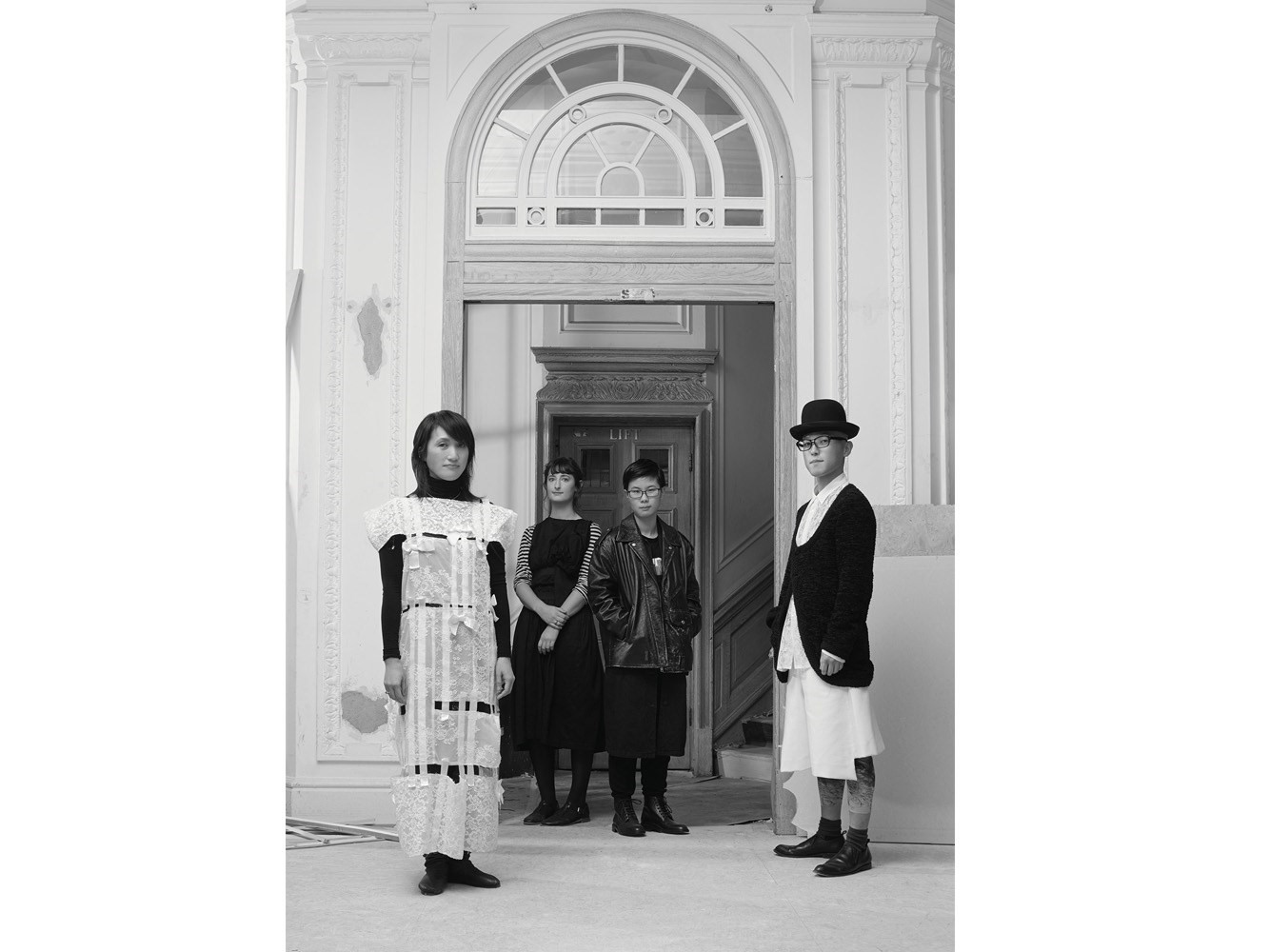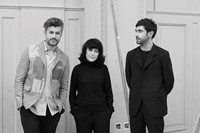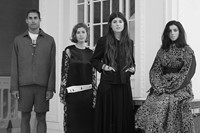“For Dover Street Market I think about making a new food, as a shop. I cook together various kinds of materials – such as clothes. Comme des Garçons would become the main ingredient. Then I mix in a few other elements as spice – interior design, furniture, etc. Sometimes I end up adding the wrong – mistaken – ingredients, but when mixed in all together with the other things, the whole has an expansive taste. This is my work.” – Rei Kawakubo
In the September 2004 issue of Dazed & Confused, Rei Kawakubo said the following to me about the soon-to-open Dover Street Market: “In Japan recently, Burberry opened a multi-million dollar flagship store. It will be the antithesis of that. Fortunately we haven’t got a lot of money so we can’t afford marble floors. We have to find an idea that won’t cost too much.”
And so they did. Dover Street Market’s “beautiful chaos” – as Kawakubo herself described it back then – has transformed the retail market in much the same way as her label Comme des Garçons has the fashion aesthetic. There is a certain perverse logic, therefore, that following further openings in Ginza and New York, London’s Dover Street Market – which takes its name from the quiet thoroughfare where it has lived for almost 12 years – is expanding, moving to a 35,000 square foot space on the Haymarket, that was built in 1911 by the architect Walter Cave, and known, for almost a century, as the Burberry building. It was, famously, that very brand’s flagship store.
In fact, Burberry moved out in 2007. Its maverick new occupants will open their doors in March. The powers that be have moved the central entrance away from the crowds of tourists and gridlocked traffic – the building is a stone’s throw south of Piccadilly Circus – to the more peaceful Orange Street, at the side. They’ve poured concrete over the wooden floors (they weren’t original and were marked with tar) to maintain the industrial feel that characterises the older space.
“It’s bloody huge,” Adrian Joffe, president of Comme des Garçons and Rei Kawakubo’s husband, said when we first talked about the project, right after the deal had been signed, in December 2014. “I have no idea how we’re going to fill it.” But fill it they will, with the work of those they have long collaborated with, from established names including Azzedine Alaïa and Raf Simons, to younger designers Molly Goddard, Phoebe English and Gosha Rubchinskiy, to jewellers Gaia Repossi and Delfina Delettrez, and big-name international brands that have, maybe unexpectedly, come into the fold – Gucci and Saint Laurent to name just two.
There will be surprise new entries also. Veteran British designers Sir Paul Smith and Margaret Howell are joining the Dover Street Market roster; so too is Demna Gvasalia, who is working on a project for the store with Vetements. Cult French cosmetics brand, Buly, which dates back to the 18th century, has also been invited into the store. “The product is wonderful,” says Joffe when we meet at the space in October 2015. “We will be the only place in London that carries it.” He is not prepared to divulge the full list of designers and retailers set to make their Dover Street Market debuts – “We have to keep some secrets back,” he says.
“It’s a listed building so we’re keeping the structure as it is,” Joffe continues, and that includes a quite magnificent grand spiral staircase, currently being restored. “Sometimes we build a wall in front of it because it’s easier to make the individual spaces, but we can’t touch the ceiling. And we’re keeping the skylights. It will be the first store Rei designs that doesn’t have false ceilings and down light. Generally, she doesn’t like the outside interfering with the inside.”
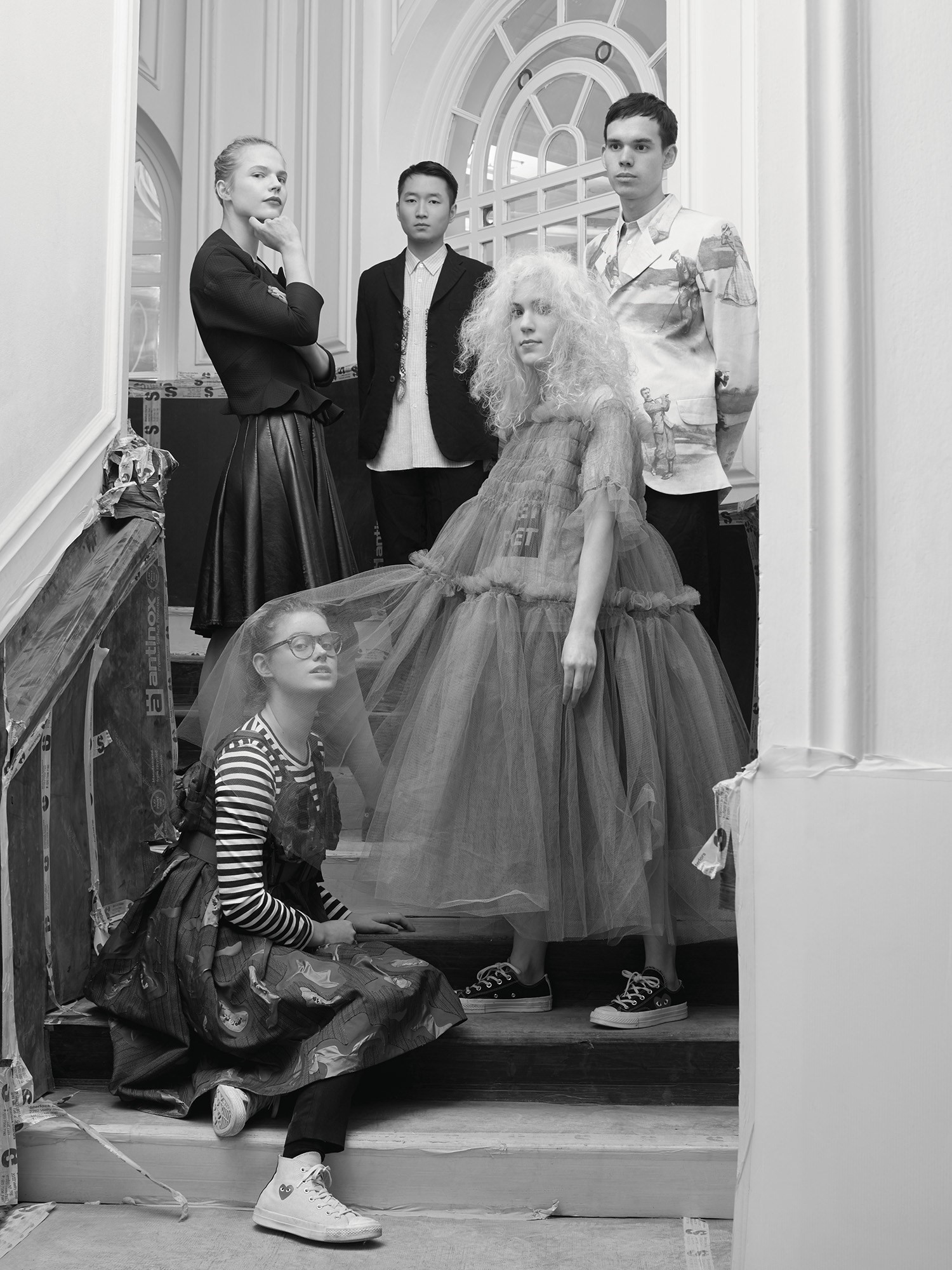
A local architect has been employed to liaise with the council, but the design of the place will be overseen in its entirety by Kawakubo herself. “Rei is the inspiration, the spirit, the overall creator of Dover Street Market,” Joffe affirms. “Everything visual and design-led is overseen by her. We do our best not to disappoint her in our choice of brands and the way we run the business.” With that in mind, as far as lighting is concerned, and given the aforementioned regulations, she has invited different artists painstakingly sourced from all over the world to design installations with complete creative control. “They’ll do the lighting as if it’s for a store, but they will be works of art in their own right. I hope it works,” Joffe says.
The basic concept, though, “is to take the existing Dover Street Market, pick it up and move it down the road to here but, because it’s three times the size, to stretch it out. People love it and are familiar with it and we want to bring that familiarity here so as not to discombobulate people. People hang out at Dover Street and we want them to hang out here, too. So it will be a cross between the very familiar – we’re bringing the perfume tower and the huts – and the new.”
Of course, there is also a financial incentive to operating in this way. True to her word, and to her philosophy with her own stores, Kawakubo allows designers to curate their own spaces only within reason. With that in mind, the single most stringent requirement – which counteracts that of all other big name brands operating globally today – is that those involved spend as little as possible. And if that seems, on the face of it, to question the world’s view of what luxury and status may be, then that is entirely deliberate. After all, right from the start of her career, the indefatigably modest Kawakubo has done just that. “Just because people spend a lot of money doesn’t mean it’s good,” says Joffe. “We like people to change things too, to go with the flow. Make it cheap and keep changing it.” Other rules include a restriction on building any wall above 250 centimetres, not being able to paint directly onto that wall, and not being able to touch the outer structure of the building. Wilful? Yes, and who would expect anything else? “You have to have rules,” Joffe says. “That’s one of the paradoxes and among the most interesting things. You have independence and freedom. Rei likes that for herself and likes to give it to everybody else. But you have to fight for independence and freedom. So within that there are very strong strictures. She gives herself those rules in order to burst through them, and hopes that others will do that too.”
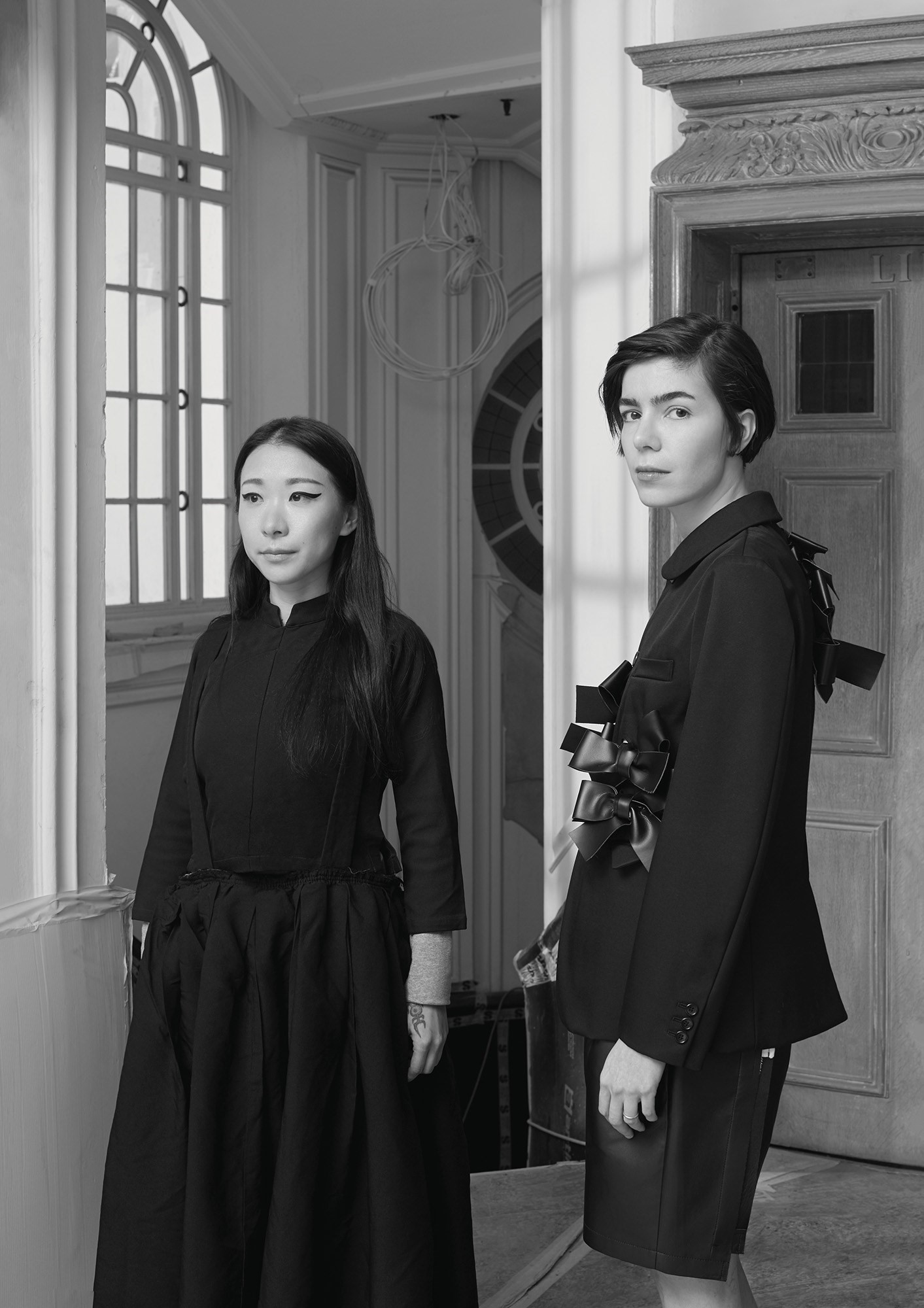
Such is Dover Street Market’s stature today that it would be only too easy to view it retrospectively as an overnight success. But that is not, in fact, the case. “It took five years for people to get used to it,” Joffe explains. “It was a struggle in the beginning because people didn’t understand it. I remember Mr Burstein [who with his wife, Joan, launched Browns, among the original stockists of Comme des Garçons, way back when] came in on the first day we opened and said: ‘This is not going to work, it’s so confusing. Where’s the ladies’? Where’s the men’s? Is this for rich people or poor people? What are you saying here?’ But the idea was exactly that, to break it up and do something new, to do a market where people could do what they want. We ignore all established rules of retailing. It’s true that we don’t distinguish between men and women, cheap and expensive, new, strong creation and timeless tradition, and we don’t dumb down to the lowest common denominator in terms of the desires and aspirations of our customer.”
“We work with TV people, film people, theatre people, dancers and artists for installations rather than shop people,” says Dover Street Market vice president Dickon Bowden, who has been with the company since it opened. “We’ve never worked with shop people. We have the best team. It’s about the team and the culture of the company. People always say that.”
Dover Street Market special projects manager Richard Windsor is a case in point: his background is in fine art and curation, not retail. “Of course, everything is directed by Rei and Adrian,” he says. “But we curate the shop and keep it alive. It’s different to the way every other retailer works. It’s definitely visually different, that’s for sure.”
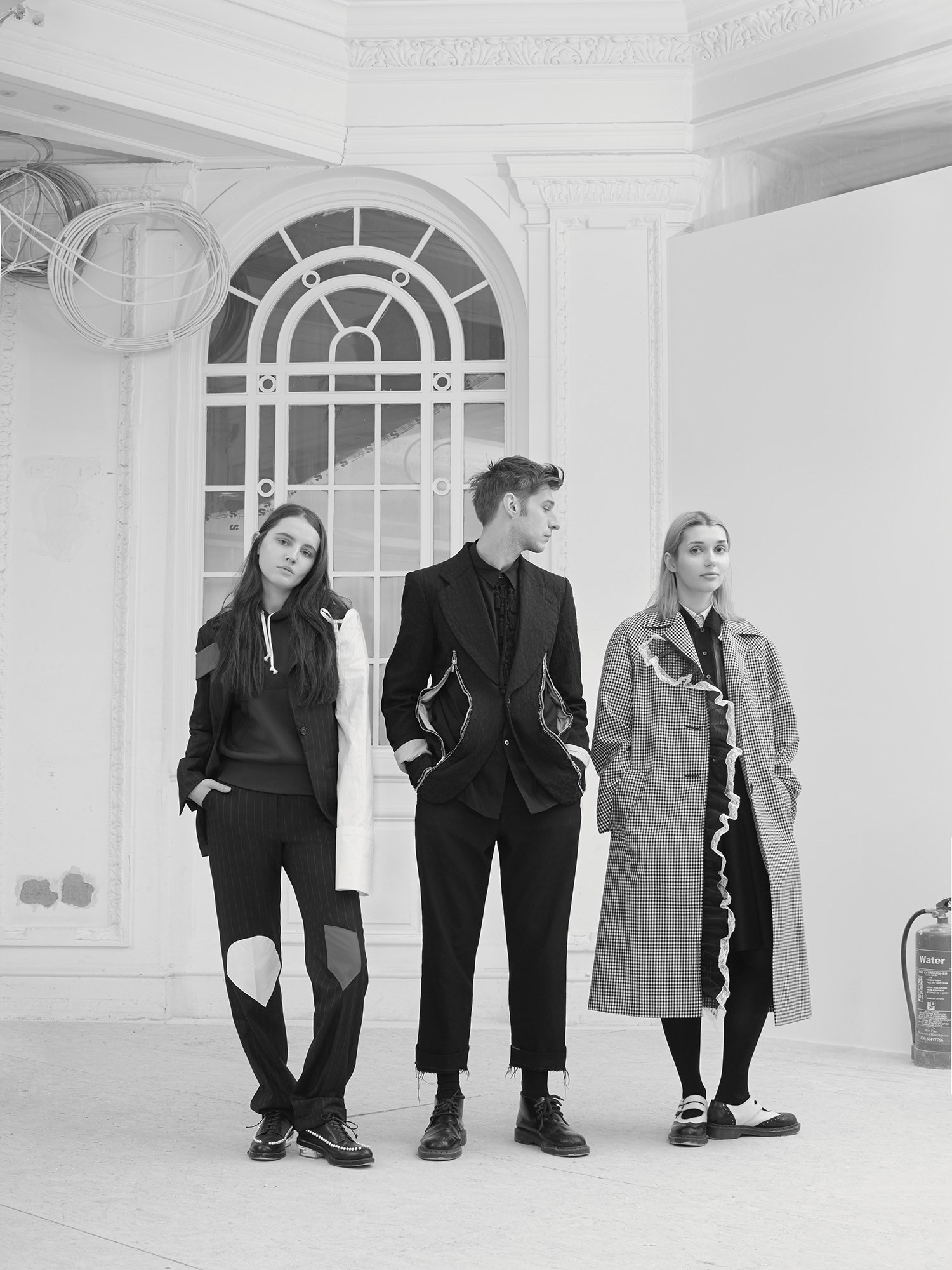
That difference goes at least some way towards explaining why some of fashion’s most high-profile protagonists – among them Chanel, Louis Vuitton and Dior – have in the past collaborated with Dover Street Market. There is both a liberty and certain integrity that comes with the association with both the store and Comme des Garçons that not only sheds a different light on such household names, but also brings a new customer to their offering.
But, says Joffe, “Rei always likes a synergy with the collaborations she’s done. Collaborating with artists, fashion designers, architects, sculptors or whatever, it’s in a synergetic way. It’s not like we give you a space and you plonk your work there. It’s all part of the whole. It’s interlinked, functional, changing the way people do things.” He continues: “We don’t just have a window for an artist, say, and that’s it. We’re not a gallery. There has to be a connection with the store. When there’s no connection to the store, no accidents are possible. And we love accidents. People come and ask, ‘Can we have a plan?’ And we say there is no plan. Rei likes to give people as little information as possible.”
In the end, for all its anti-establishment stance, Dover Street Market must succeed commercially to stay alive. “We don’t like to compromise, of course,” Joffe says. “That’s not a word we like at Comme des Garçons or Dover Street Market. Rei doesn’t understand what it means. Of course we are very aware we have to be financially successful, otherwise there is no point, but we hope to succeed without having to compromise and that we find that famous balance between the creative and the commercial. They are not mutually exclusive.”
For more than 40 years, Kawakubo and Comme des Garçons have worked tirelessly to prove just that. And, since its opening more than a decade ago, so too has Dover Street Market, its gifted collaborators and entire extraordinary staff. Here, we canvass the opinions of some of its most highly-valued residents.
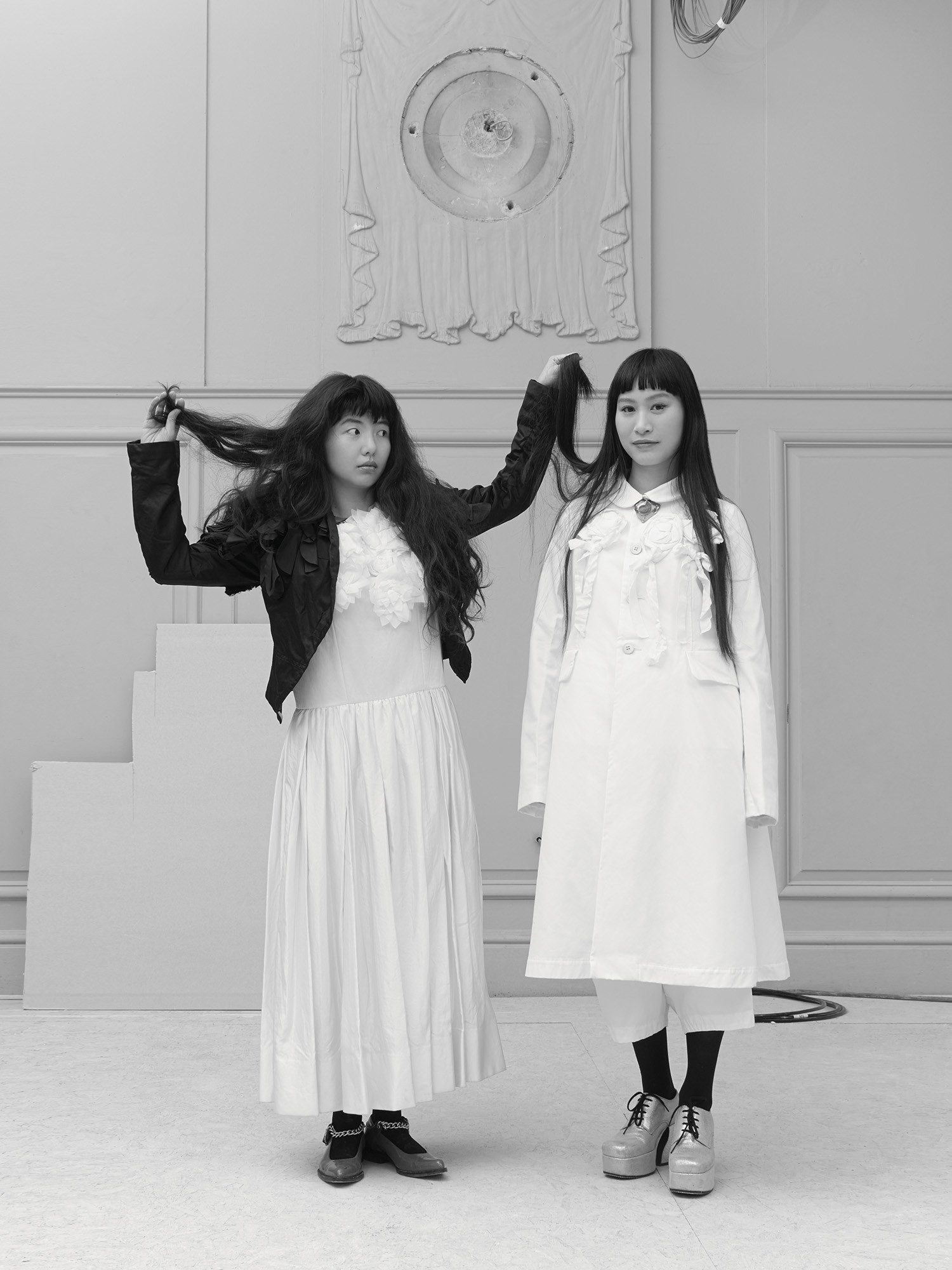
Michèle Lamy, creative consultant and designer, and wife and business partner of Rick Owens
“Oh, there are so many reasons for me to feel at home at Dover Street Market. I like flea markets, so to be with a lot of people, where there is the balance. To be here is to be with your peers, to be with who you like, even if it’s not for the clothes. Because you also find artists. I think Rei is the most genius artist and businesswoman. We’re all super happy to be here. It feels like being part of a family. It’s not like selling. I’m not trying to sell things. But it’s working on that level too and that’s fantastic. And look at everybody who comes here. They look clever. They look good.”
Chitose Abe, creative director and founder of Sacai
“Dover Street Market is a place where I can be free to express myself. When Ms Kawakubo invited me to come here I remember feeling excited to work with Comme des Garçons again, as it was the first time I’d done so since leaving the company. In the beginning I was designing a special capsule collection called Sacai GEM for them, but now they have a dedicated space for Sacai that allows me to create the Sacai world for the customers who come and visit.”
Gosha Rubchinskiy, streetwear designer and photographer
“Comme des Garçons is always the top for me. It’s a legend and very present. They talk about serious things with great humour. I was very happy to have Dover Street Market as the first place where I started to sell outside Russia five years ago. I am looking forward to the new space in London.”
Alessandro Michele, creative director of Gucci
“Genius. I met her for tea last September close to Place Vendôme in Paris. Can you imagine that? Face to face with Rei Kawakubo, a fashion legend. At a certain point she told me that she can easily recognise a punk soul – a gentle one – in my work and that she was sure that I have tattoos, and it’s true. She is not only a designer, she is a philosopher. She has the ability to always force you to question everything. Her outfits have a huge standing and they continue to make a statement across decades. To me, Dover Street Market means unconventional fashion yet straightforward retail. It’s a place capable of constantly changing itself without losing its appeal and creativity, and a place capable of envisioning other brands.”
Maureen Doherty, co-founder of London boutique Egg, which began its collaboration with Dover Street Market in 2011
“Running, jumping and full of laughter and freedom, Dover Street Market has opened a door to Wonderland. It gives freedom not only to famous and established designers, but space to new and young makers. This unrestrictive way of being has completely set it apart from all the large stores usually run by buyers with powerful personal views, intent on attracting a ‘particular’ client. DSM is a place to discover what is happening in the world of fashion at every level. Our working relationship has always been a joy. Rei has set the stage for openness and individual expression. This is rare and essential if you wish for the best from someone. Our collaboration is one of mutual respect and openness.”
Delfina Delettrez, jewellery designer
“Rei Kawakubo and Comme des Garçons are proof that you can create an amazing and exciting business while keeping total integrity and vision. I love that Rei Kawakubo is a deep and discreet woman in that vision. Dover Street Market was one of the first stores in the world to support and believe in me. They are part of my evolution and accompanied me along my route, having faith in me and representing my brand in London, New York and Tokyo. They are every designer’s dream. It is inspiring how they are always excited about new ideas and open and ready to do new projects. And it is a place where the designer doesn’t need to find a compromise between natural creativity and business. It’s a place where even the most eccentric ideas are welcome and find the perfect customer or viewer.”
Stephen Jones, milliner and founder of Stephen Jones Millinery
“Rei Kawakubo is probably the most important, innovative designer working today. It’s very interesting that she believes the creation of her company and her retail environment is as important as the creation of clothes. To me, Dover Street Market feels like home. Not only because of all the people involved with it, but it was Dover Street Market that hosted my quarter-century retrospective exhibition in 2005. I also think if you’ve shopped at DSM, why would you want to shop anywhere else?”
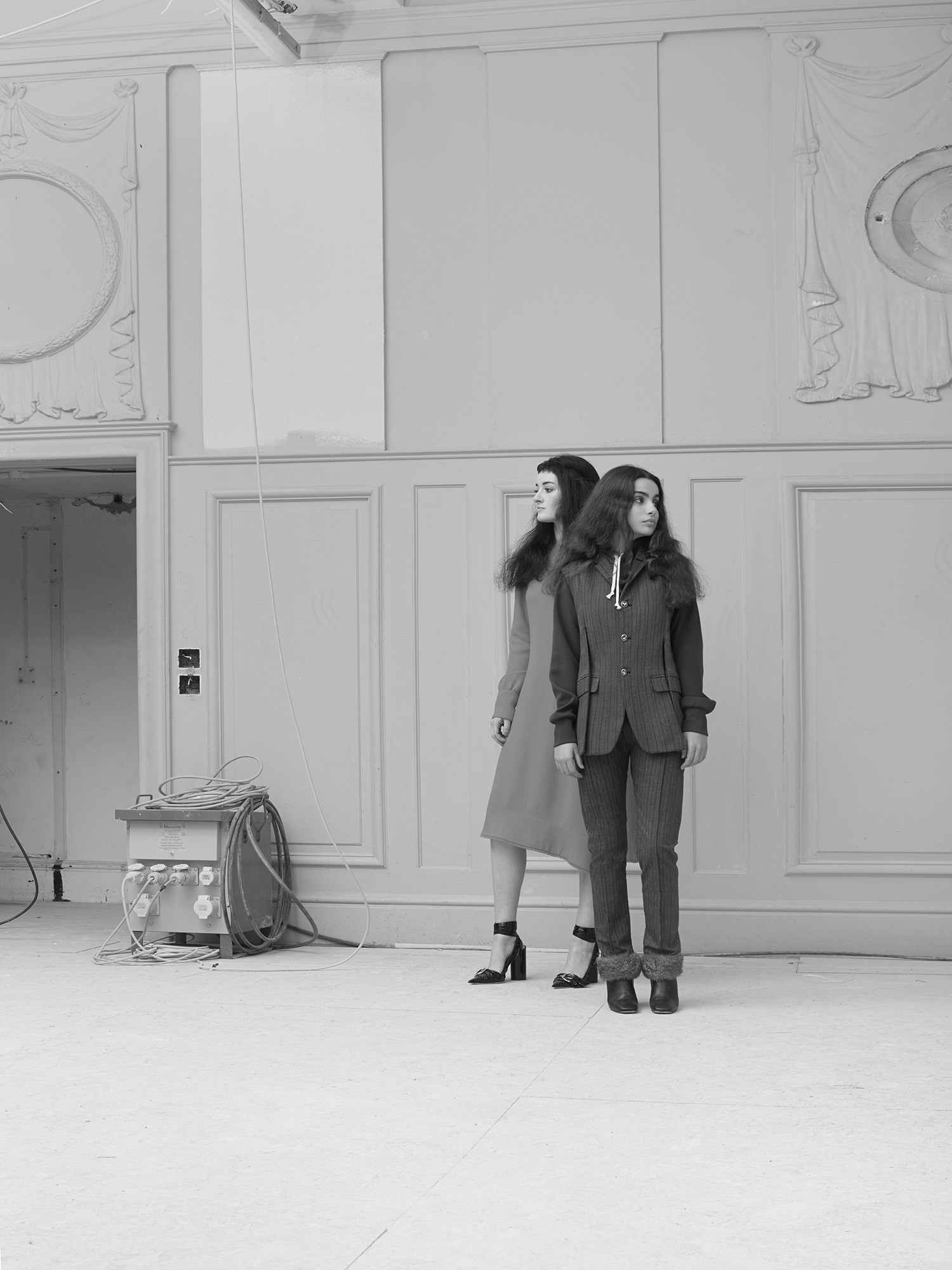
Raf Simons, designer of the eponymous menswear brand and former creative director of Christian Dior
“Rei, like Comme des Garçons, like Dover Street Market, says, ‘Fuck you all, I do what I want!’ In today’s fashion system that is ultimately admirable. Her female voice and opinion – like the artists Isa Genzken, Rosemarie Trockel and Cindy Sherman – is needed in our male-dominated fashion system.”
Rose Carrarini, British chef and co-owner of Rose Bakery at Dover Street Market
“The names Comme des Garçons and Rei Kawakubo mean inspirational and always looking forward. Dover Street Market is a place where I always feel comfortable to shop. There’s always something new. Working with Dover Street Market has been about a natural understanding, and therefore so easy. The way customers love it makes me happy. It started in a rush but I always felt it was the right place for Rose Bakery. Explaining what’s ‘right’ is impossible. It just works. And working with Dover Street Market has been a perfect combination of ideas.”
Demna Gvasalia, head designer and spokesperson for Vetements, and recently appointed artistic director of Balenciaga
“Rei Kawakubo and Comme des Garçons: non-conformism, experimentation, intelligence and poetry. Dover Street Market: shopping. We are just starting an amazing project with good exciting energy and prospects. It’s about to become a long-term partnership.”
Michael Costiff , designer, owner of World Archive, and founder of infamous London club night Kinky Gerlinky
“I was flattered to be invited to curate a space at Dover Street Market in 2005. I had always worked independently and never for a large company. Little did I imagine that all these years later I would have spaces in all the Dover Street Markets worldwide. I challenge myself constantly to find rare and unusual items and am happy that my hard work is so appreciated. For the launch of my book, Michael & Gerlinde’s World: Pages from a Diary, I took over the window for almost four weeks. My installation was much enjoyed by customers, friends and passers-by, and I signed many copies of my book there. It was a special and happy time for me. Rei knows and trusts my taste so I’m given pretty much a free rein. Being surrounded by so many renowned and creative designers certainly keeps me on my toes. My interests are eclectic and precise, so they have become quite used to me often changing things around. It must be just right. There is always something new to see at Dover Street Market and I like to make sure there is always something new to see at World Archive, too.”
JW Anderson, fashion designer
“For me, Rei as Comme des Garçons represents the sharpest of modernity outside the rest. Dover Street Market is a store that I have the most personal relationship with. When I first moved to London it had just opened. I was at university and it was the newest way of shopping, and that still stands today. It has a curated space and everything feels personal and considered. I really enjoy working with Dover Street Market, because fundamentally they give you the parameters and then let you express yourself in whatever way you want. There are no other stores in the world that let you do that, let you talk in terms of concepts. Both Rei and Adrian are visionaries in the way they let creative people breathe. Since the beginning of my career, Dover Street has backed me. This, for me, is where I feel our first JW Anderson stores were situated.”
Gaia Repossi, jewellery designer and artistic director of Repossi
“At Dover Street Market, branding is pushed to its purest form of abstraction. That feels lost today with impersonal junk spaces surrounding us. I was told to consider the London shop as if it were my own, and it was beyond flattering to hear that. I felt like I always had an intimate address in London with Dover Street Market that seemed very personal. I also recall having Rei and her team asking me to draw how I imagined my space in her shop would be, which was a great sign of recognition. Later on, Rei Kawakubo-san herself came to see one of our jewellery presentations and I was very honoured. I was first carried in their shop more than eight years ago, and since then our worlds have combined and our presence has grown gradually. We are planning a stunning new project with them for the new London space and the other two stores next year.”
Simone Rocha, fashion designer
“I was obsessed with Dover Street Market and Comme as a teenager. So it was a dream when Adrian and Rei came to see the small collection of plastic, lace and tulle dresses that I showed off-schedule in London. Then the collection went into the stores – they were the very first stockists. My second season, I was asked to do a window. We were a very small team, driven by creativity and working with our hands. We built a giant, living foliage sculpture, just like the overgrown lane behind my house in Ireland. It was made of moss and eucalyptus, so the smell was intoxicating. We made it in my tiny studio, with dry flowers and foliage hanging from the ceiling. We moved it into the window over two days and it was such an intimate and creative experience; very removed from the typical fashion window, which made it so special. We still work with Dover Street Market in this way: creativity and innovation always come first.”
DSM staff: Agne Norvilaite, Bronte Schwier, Electra Dimitriadou, Elisa Brown, Evelyne Birbaumer, Hannah Seaton, Hitomi Takahashi, Kai Evill, Ken Watanabe, Leo Liang, Michal Kozlowski, Olga Kaminska, Oliwia Golawska, Polly Pan, Shenggy Butler, Si Liu, Tori Rodway, Wiggy Wong. Hair Massimo Gamba at Atomo Management; Make-up Lucy Burt at D+V Management using MAC Cosmetics; Photographic assistants James Donovan, Eddie Blagbrough; Styling assistants Chloe Grace Press, Jayme Miller, Rebecca Perlmutar; Hair assistant Delphine Bonnet; Make-up assistants Louise Hall, Laura Magennis; Production John Haywood at Mini Title; Special thanks to Daisy Hoppen
This article appears in the S/S16 edition of AnOther Magazine.
Dover Street Market Haymarket will open its doors at 11am on the 19th of March, 2016.
